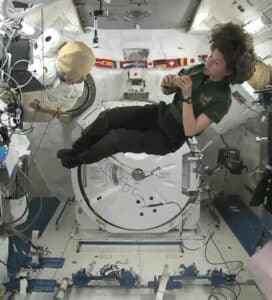Dental Team Investigates Bone Regeneration Therapy in Space
In a collaborative effort, the NASA team from the University of Pittsburg School of Dental Medicine’s INTINILAB is working with a biomedical startup to study the effects of lack of gravity on skeletal stem cells.

In a collaborative effort, the NASA team from the University of Pittsburg School of Dental Medicine’s INTINILAB is working with a biomedical startup to study the effects of lack of gravity on skeletal stem cells. In experiments conducted during the SpaceX-26 RR25 mission to the International Space Station (ISS), researchers tested the ability of a special “bone superglue” from RevBio to induce bone regeneration. This agent may be helpful for future long-term space travel, as well as for bone regeneration and treatment of fractures on Earth.
The space station’s microgravity environment offered an ideal test bed, as microgravity has been shown to accelerate bone loss. The two-pronged investigation explored how skeletal stem cells (bone-specific postnatal stem cells) are affected by microgravity, and also evaluated RevBio’s Tetranite bone adhesive to see if and how it promotes bone regeneration by stimulating skeletal stem cells.
“This study will help us map what happens with skeletal stem cells in space compared to Earth,” notes Giuseppe Intini, DDS, PhD, principal investigator and an associate professor of periodontics and preventive dentistry at the University of Pittsburgh School of Dental Medicine. “That’s important because previous research indicates microgravity may lock stem cells into an undifferentiated status, which could be what’s causing the decline of bone mass in astronauts.”
Intini says the ISS experiments should aid scientific understanding of how to harness skeletal stem cells for therapeutic uses, which could ultimately result in better treatments for bone defects, as well as bone regeneration therapies. In addition to fracture repair, the novel adhesive is designed to regenerate bone that’s either low quality or deficient in volume — a development that could lead to promising new approaches in periodontal and dental implant therapy.
From Decisions in Dentistry. January 2023;9(1)8.


